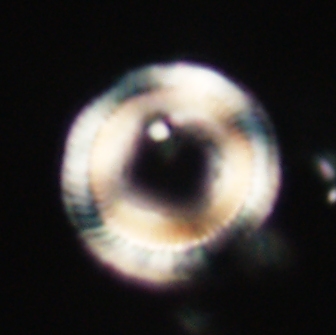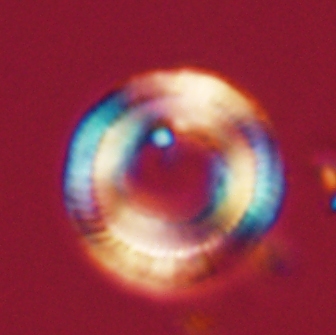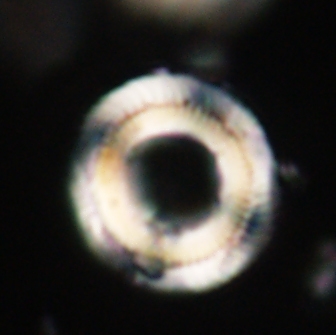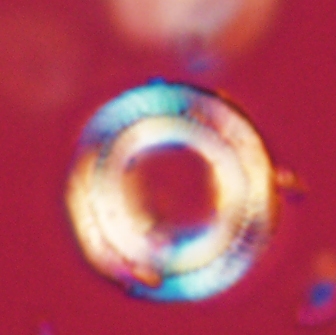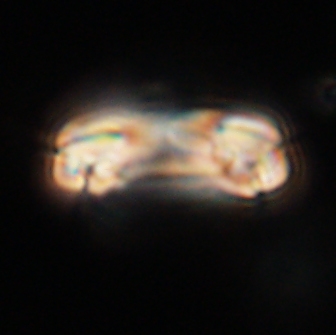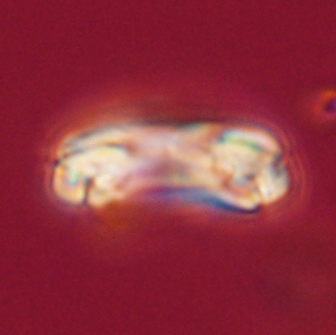Denisea magna
Set number: 531
-
1
-
2
-
3
-
4
-
5
-
6
-
7
-
8
-
9
-
10
-
11
-
12
10µm
Set number: 530
-
1
-
2
-
3
-
4
10µm
Set number: 529
-
1
-
2
-
3
-
4
-
5
-
6
-
7
-
8
10µm
Set number: 527
-
1
-
2
-
3
-
4
-
5
-
6
-
7
-
8
10µm
Set number: 528
-
1
-
2
-
3
-
4
10µm
Denisea magna Varol, 2022
From Latin magna, meaning " very large", it refers to its large and vacant central area.
Maximum diameter: 10.30 μm, the diameter of the central area: 4.96 μm, the width of the pelaga: 2.67 μm; thickness: 3.87 μm.
Inclination angles of holotype: Distal shield: 75.0°; proximal shield: 62.3°; sutures between the shields: 74.1°; suture between the tube cycle and the shields: 32.2°.
Large (9.0–12.0 μm) Denisea species have a birefringent tube cycle, two shields, and a wide vacant central area. The diameter of the central area is greater than or equal to the width of the pelaga but not twice as much. The separation of the tube cycle and shields is more clearly visible in bright-field and phase-contrast illuminations.
Denisea magna, Denisea constricta, and Denisea polymegalo have similar sizes (9.0–12.0 μm), but their central area sizes distinguish them. The central area is narrower than the width of the pelaga in Denisea constricta. The diameter of the central area is at least twice the width of the pelaga in Denisea polymegalo. In Denisea magna, the central area is larger than the width of the pelaga but not twice as much. Denisea magna differs from Denisea aliquanta, Denisea foramena, and Denisea subpertusa by being larger than 9.0 μm. The overall size of Denisea aliquanta, Denisea foramena, and Denisea subpertusa ranges between 5.0 and 9.0 μm.
Varol, O. 2022. Denisea, a new genus of Paleocene calcareous nannofossils. Neues Jahrbuch für Geologie und Paläontologie, Abhandlungen, 304/2 (2022): 159-186.
